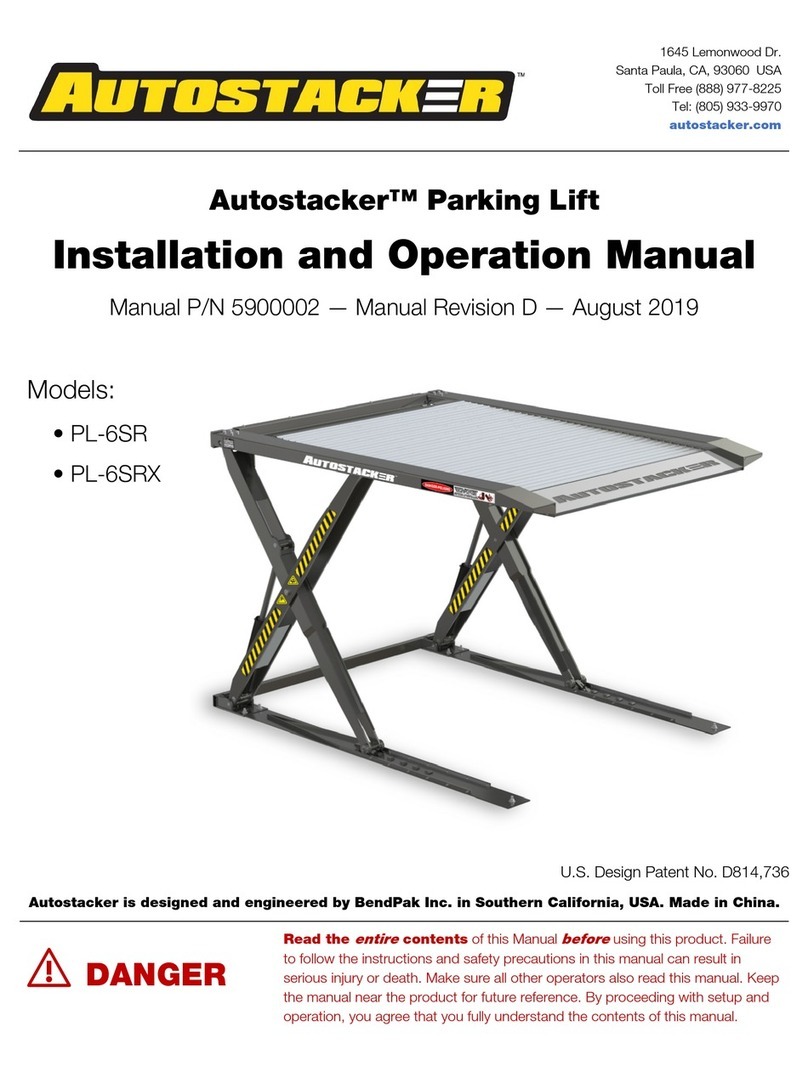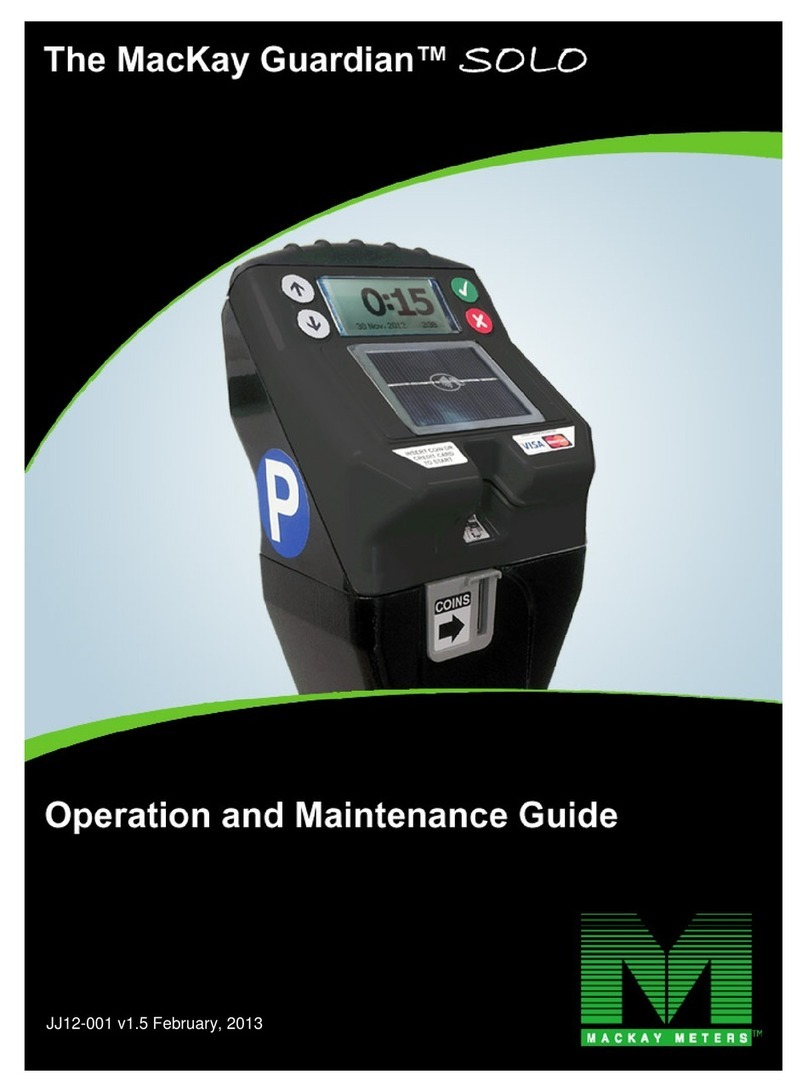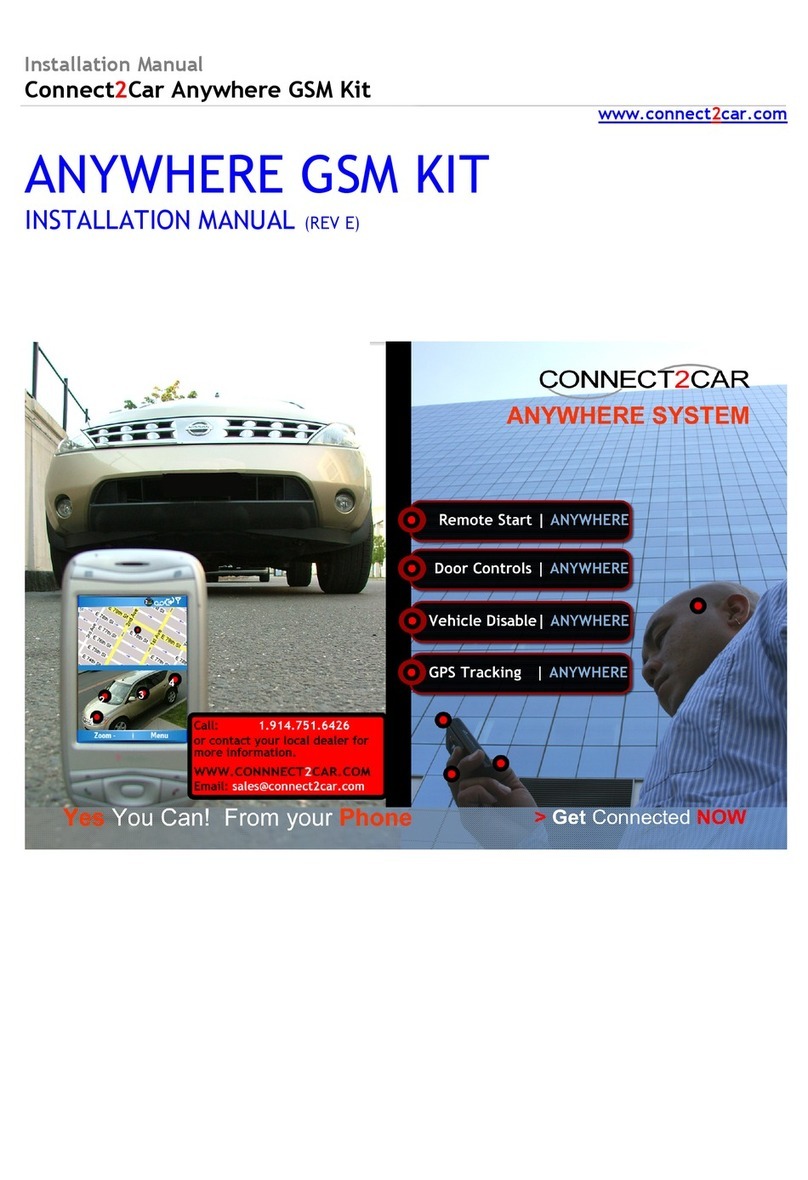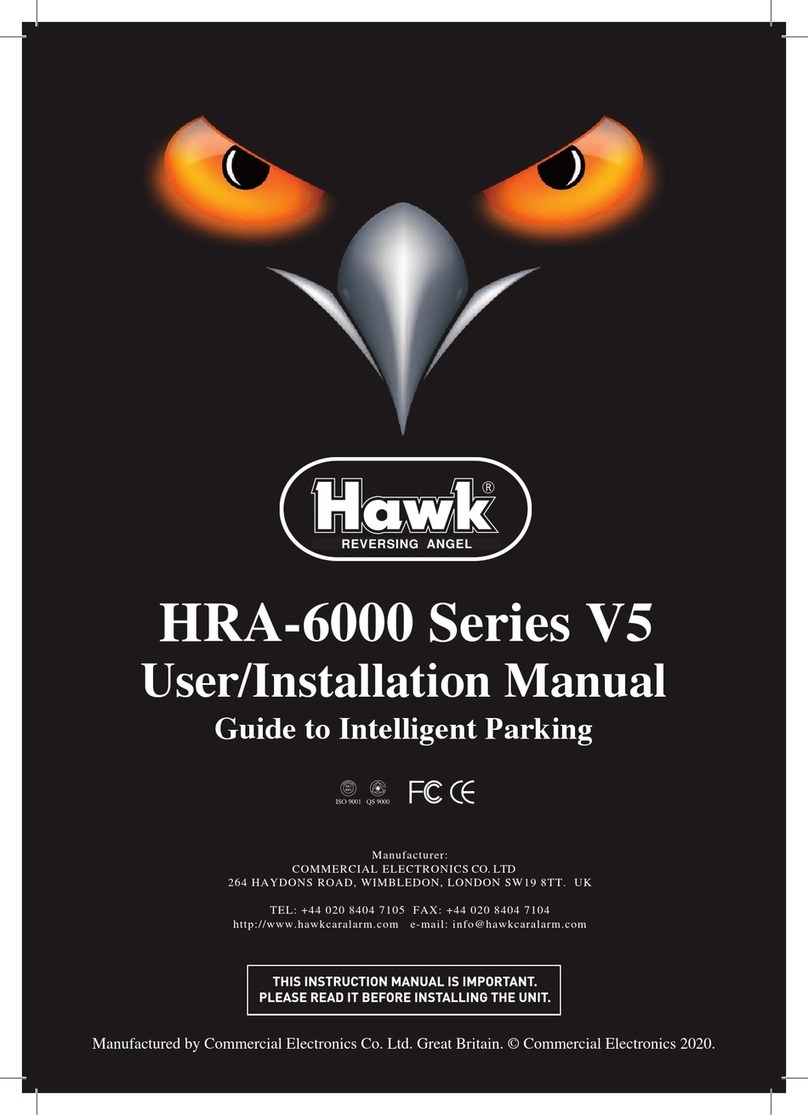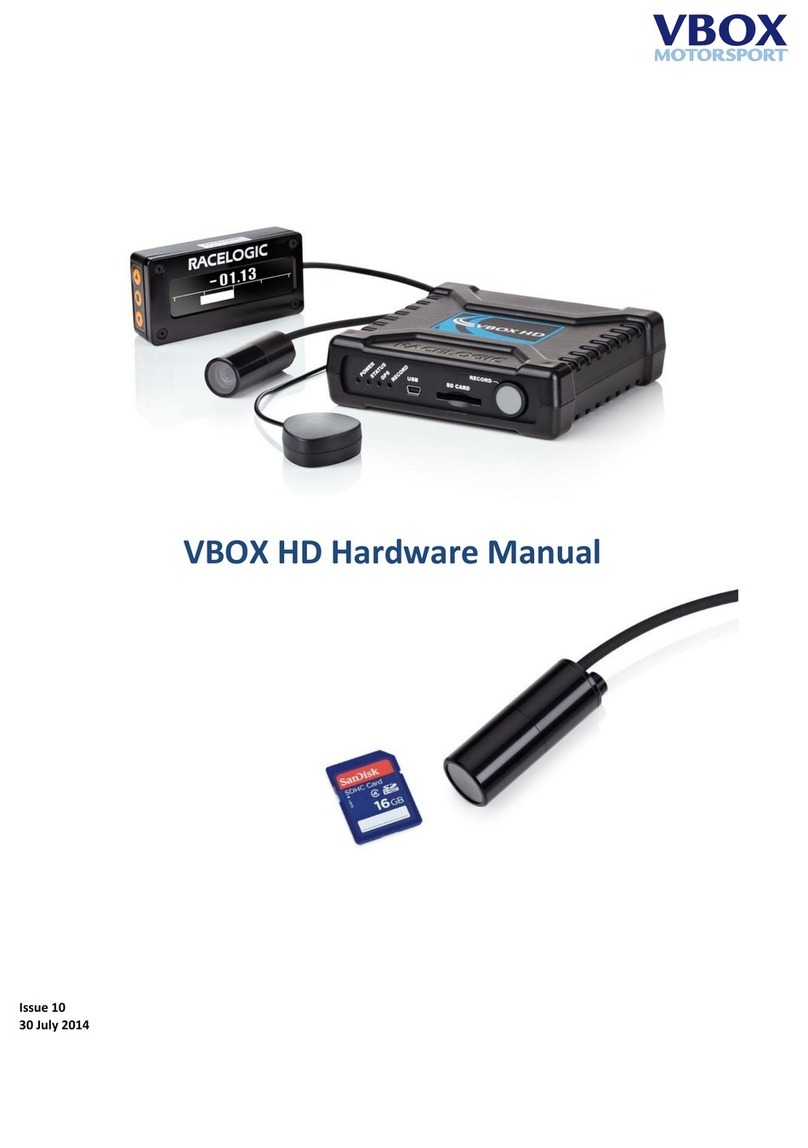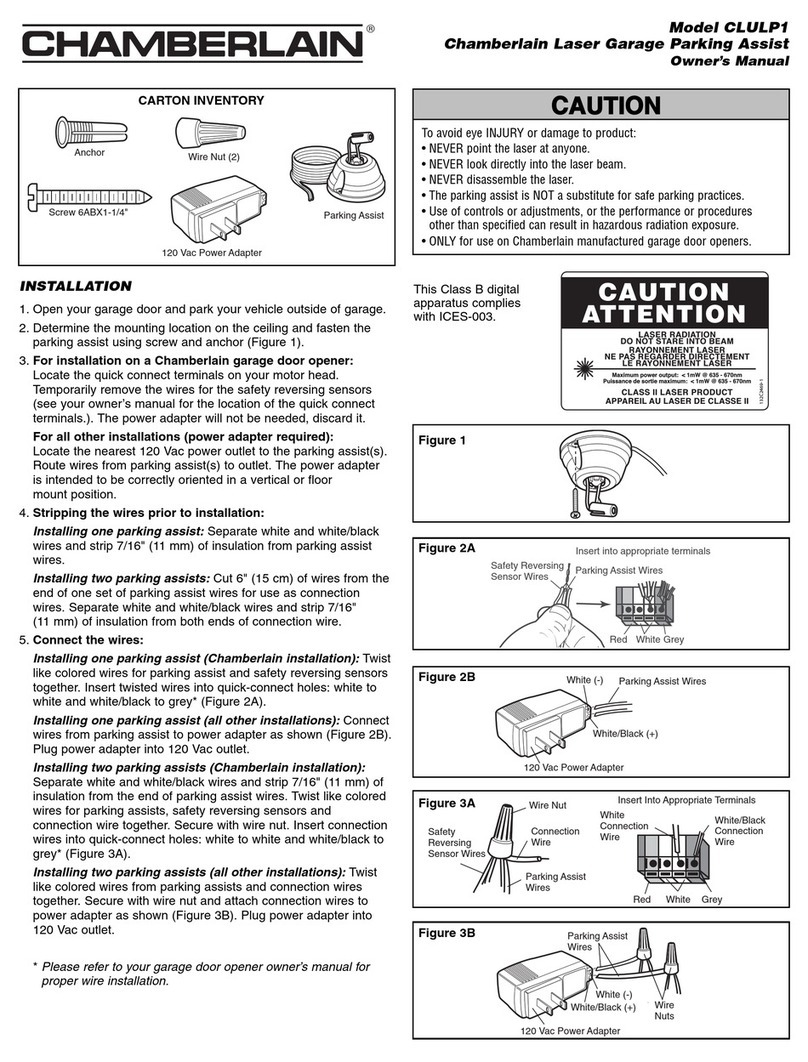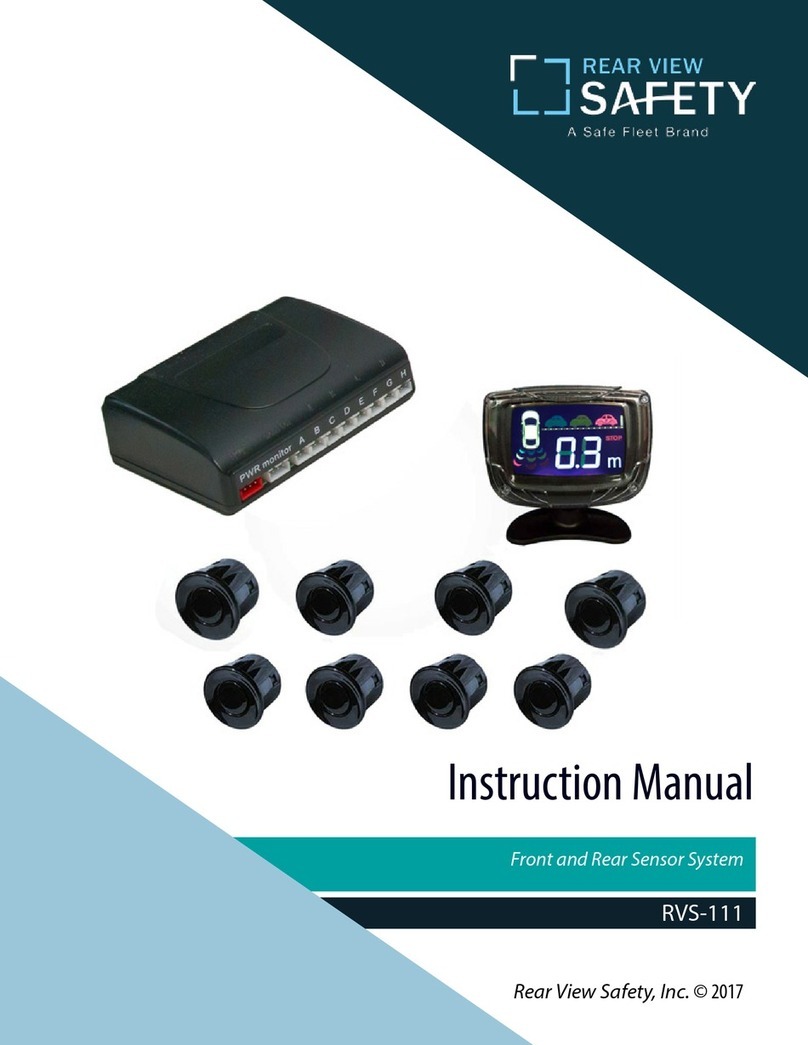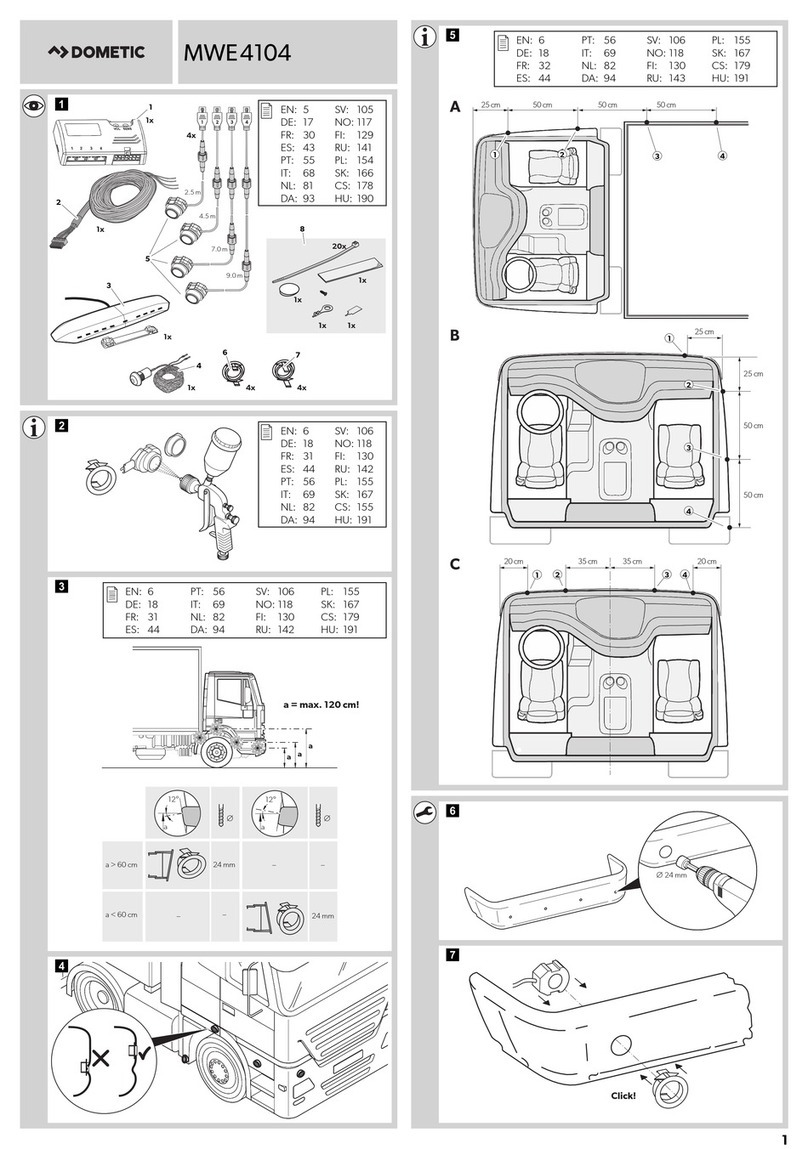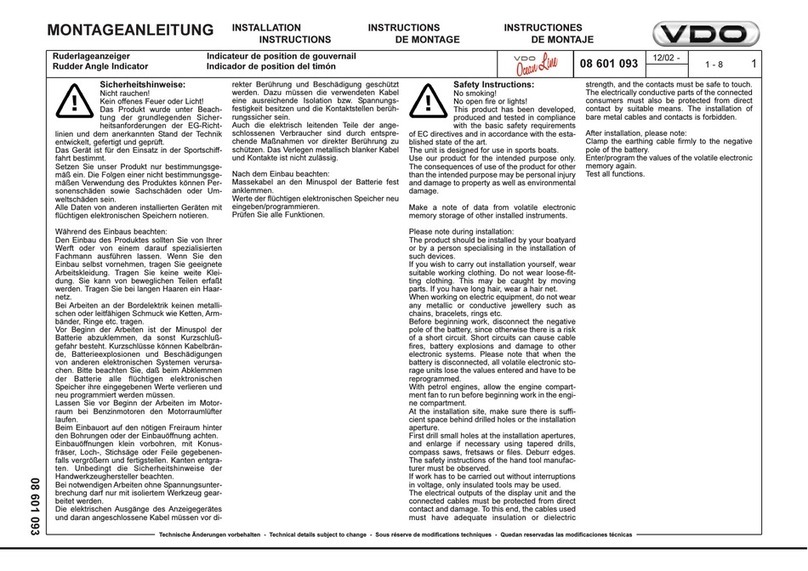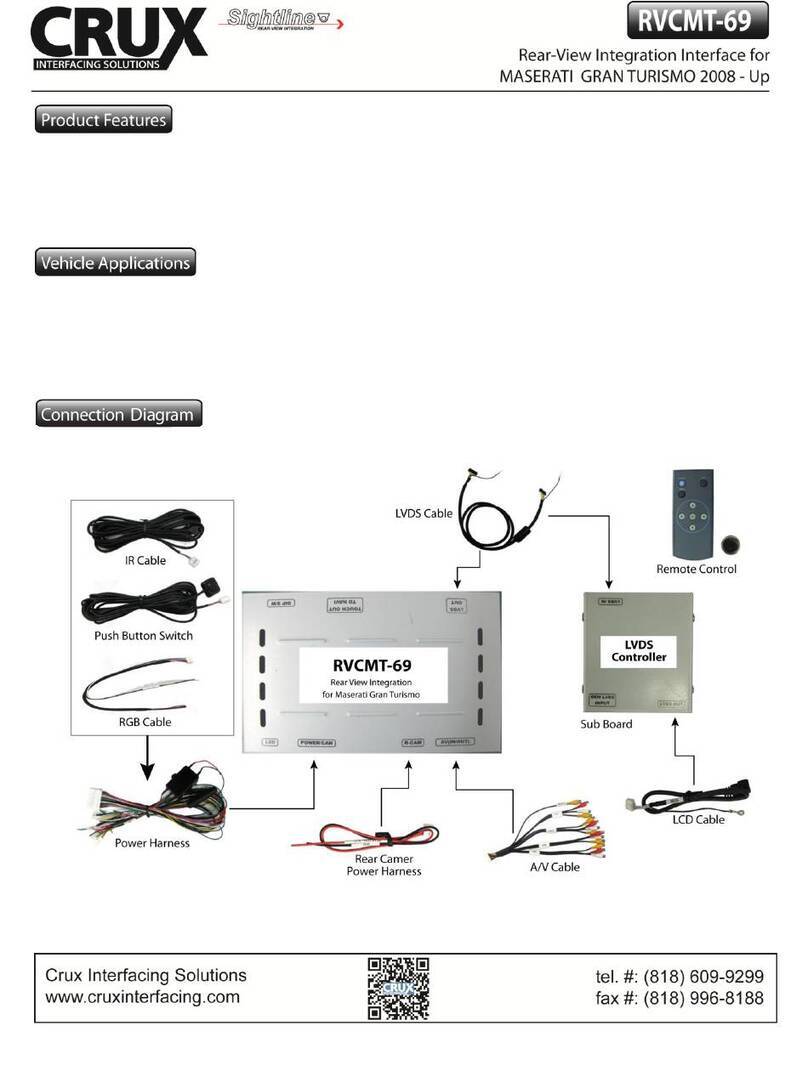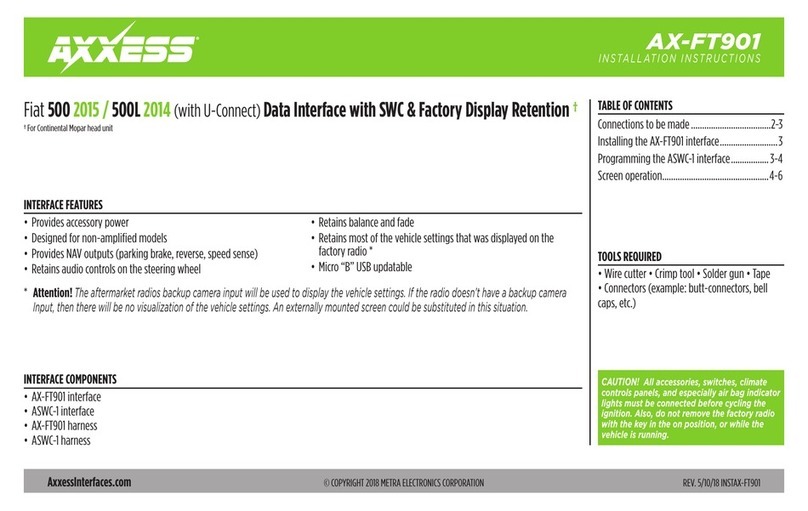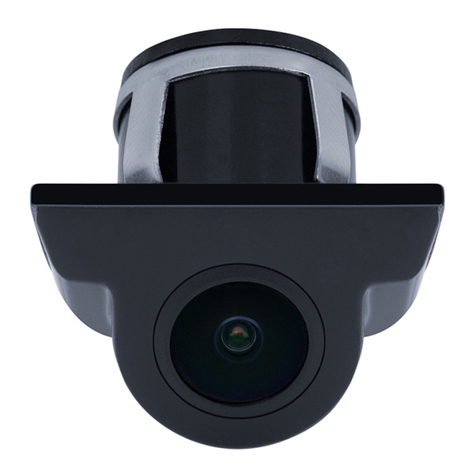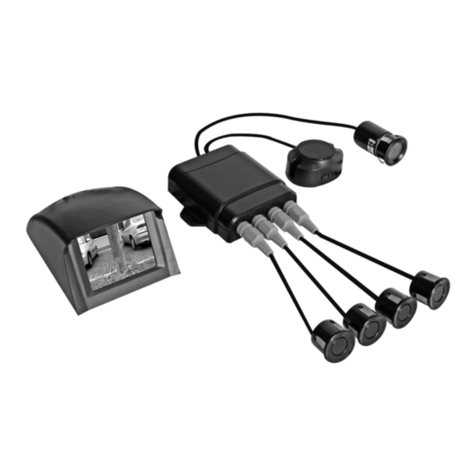Bend-Pak PL-6000 User manual

INSTALLATION AND OPERATION MANUAL
PARKING LIFT
WITH DECK
Models:
PL-6000
PL-6000X
PLEASE READ THE ENTIRE CONTENTS OF THIS MANUAL PRIOR TO
INSTALLATION AND OPERATION. BY PROCEEDING YOU AGREE THAT
YOU FULLY UNDERSTAND AND COMPREHEND THE FULL CONTENTS OF
THIS MANUAL. FORWARD THIS MANUAL TO ALL OPERATORS. FAILURE TO
OPERATE THIS EQUIPMENT AS DIRECTED MAY CAUSE INJURY OR DEATH.
REV A 10-30-09
p/n#5900149
1645 Lemonwood Dr.
Santa Paula, CA. 93060, USA
Toll Free 1-800-253-2363
Tel: 1-805-933-9970
Fax: 1-805-933-9160
www.bendpak.com
BE SAFE
Your new lift was designed and built with safety in mind.
However, your overall safety can be increased by proper
training and thoughtful operation on the part of the operator.
DO NOT operate or repair this equipment without reading this
manual and the important safety instructions shown inside.
SHIPPING DAMAGE CLAIMS
When this equipment is shipped, title passes to the
purchaser upon receipt from the carrier. Consequently,
claims for the material damaged in shipment must be made
by the purchaser against the transportation company at the
time shipment is received.
Keep this operation manual near the
machine at all times. Make sure that
ALL USERS read this manual .

2
PARKING LIFT
WITH DECK
This instruction manual has been prepared especially for you.
Your new lift is the product of over 35 years of continuous research, testing and development;
it is the most technically advanced lift on the market today.
READ THIS ENTIRE MANUAL BEFORE INSTALLATION & OPERATION BEGINS.
RECORD HERE THE LIFT AND
POWER UNIT INFORMATION WHICH IS
LOCATED ON THE SERIAL NUMBER
DATA PLATES ON THE LIFT AND
ON THE POWER UNIT
Power Unit Model # _____________
Power Unit Date Of Mfg. _____________
Power Unit Serial # _____________
This information is required when
calling for parts or warranty issues.
PRODUCT WARRANTY
BendPak Parking Lifts are covered under warranty for one year on equipment structure, to be free of defects in material
and workmanship. Power units, hydraulic cylinders, and all other assembly components such as turnplates, slip plates,
cables, chains, valves, switches etc. are covered under warranty for one year against defects in material or workman-
ship under normal use. BendPak Inc. shall repair or replace at their option for the warranty period those parts returned
to the factory freight prepaid which prove upon inspection to be defective. BendPak Inc. will pay labor costs for the first
12 months only on parts returned as previously described.
The warranty does not extend to...
defects caused by ordinary wear, abuse, misuse, shipping damage, improper
installation, voltage or lack of required maintenance;
damages resulting from purchaser’s neglect or failure to operate products in accordance with
instructions provided in the owner’s manual(s) and/or other accompanying instructions supplied;
normal wear items or service normally required to maintain the product in a safe operating condition;
any component damaged in shipment;
other items not listed but may be considered general wear parts;
damage caused by rain, excessive humidity, corrosive environments or other contaminants.
THESE WARRANTIES DO NOT EXTEND TO ANY COSMETIC DEFECT NOT INTERFERING WITH EQUIPMENT
FUNCTIONALITY OR ANY INCIDENTAL, INDIRECT, OR CONSEQUENTIAL LOSS, DAMAGE, OR EXPENSE THAT
MAY RESULT FROM ANY DEFECT, FAILURE, OR MALFUNCTION OF A BENDPAK INC. PRODUCT OR THE
BREACH OR DELAY IN PERFORMANCE OF THE WARRANTY.
WARRANTY IS NOT VALID UNLESS
WARRANTY CARD IS RETURNED.

3
IMPORTANT NOTICE
Do not attempt to install this lift if you have never been
trained on basic automotive lift installation procedures.
Never attempt to lift components without proper lifting
tools such as forklift or cranes. Stay clear of any moving
parts that can fall and cause injury. These instructions
must be followed to insure proper installation and
operation of your lift. Failure to comply with these
instructions can result in serious bodily harm and void
product warranty. Manufacturer will assume no liability for
loss or damage of any kind, expressed or implied resulting
from improper installation or use of this product.
PLEASE READ ENTIRE MANUAL
PRIOR TO INSTALLATION.
DEFINITIONS OF
HAZARD LEVELS
Identify the hazard levels used in this manual with the
following definitions and signal words:
DANGER !
Watch for this symbol: It Means: Immediate hazards
which will result in severe personal injury or death.
WARNING !
Watch for this symbol: It Means: Hazards or unsafe
practices which could result in severe personal
injury or death.
CAUTION !
Watch for this symbol: It Means: Hazards or unsafe
practices which may result in minor personal injury,
product or property damage.
OWNER’S RESPONSIBILITY
To maintain the lift and user safety, the responsibility of
the owner is to read and follow these instructions:
Follow all installation and operation instructions.
Make sure installation conforms to all applicable Local,
State, and Federal Codes, Rules, and Regulations;
such as State and Federal OSHA Regulations and
Electrical Codes.
Carefully check the lift for correct initial function.
Read and follow the safety instructions. Keep them
readily available for machine operators.
Make certain all operators are properly trained, know
how to safely and correctly operate the unit, and are
properly supervised.
Allow unit operation only with all parts in place and
operating safely.
Carefully inspect the unit on a regular basis and
perform all maintenance as required.
Service and maintain the unit only with authorized or
approved replacement parts.
Keep all instructions permanently with the unit and
all decals on the unit clean and visible.
BEFORE YOU BEGIN
Receiving:
The shipment should be thoroughly inspected as soon as it
is received. The signed bill of lading is acknowledgement by
the carrier of receipt in good condition of shipment covered
by your invoice. If any of the goods called for on this bill of
lading are shorted or damaged, do not accept them until the
carrier makes a notation on the freight bill of the shorted or
damaged goods. Do this for your own protection.
NOTIFY THE CARRIER AT ONCE if any hidden loss or
damage is discovered after receipt and request the carrier
to make an inspection. If the carrier will not do so, prepare
a signed statement to the effect that you have notified the
carrier (on a specific date) and that the carrier has failed to
comply with your request.
IT IS DIFFICULT TO COLLECT FOR LOSS OR DAMAGE
AFTER YOU HAVE GIVEN THE CARRIER A CLEAR
RECEIPT. File your claim with the carrier promptly. Support
your claim with copies of the bill of lading, freight bill,
invoice, and photographs, if available. Our willingness to
assist in helping you process your claim does not make
BendPak responsible for collection of claims or
replacement of lost or damaged materials.

4
TABLE OF CONTENTS
Contents Page No.
Warranty / Serial Number Information . . . . . . . . . . . . . . . . . . . . . . . . . . . . . . . . . . . . . . . . . . . . . . . . . . . . . . . . . . . . . . . 2
Definitions of Hazard Levels . . . . . . . . . . . . . . . . . . . . . . . . . . . . . . . . . . . . . . . . . . . . . . . . . . . . . . . . . . . . . . . . . . . . . . 3
Owner’s Responsibility . . . . . . . . . . . . . . . . . . . . . . . . . . . . . . . . . . . . . . . . . . . . . . . . . . . . . . . . . . . . . . . . . . . . . . . . . . . 3
Before You Begin . . . . . . . . . . . . . . . . . . . . . . . . . . . . . . . . . . . . . . . . . . . . . . . . . . . . . . . . . . . . . . . . . . . . . . . . . . . . . 3
Introduction . . . . . . . . . . . . . . . . . . . . . . . . . . . . . . . . . . . . . . . . . . . . . . . . . . . . . . . . . . . . . . . . . . . . . . . . . . . . . . . . . . 6
Safety / Warning Instructions . . . . . . . . . . . . . . . . . . . . . . . . . . . . . . . . . . . . . . . . . . . . . . . . . . . . . . . . . . . . . . . . . . . . . 6
Tools Required . . . . . . . . . . . . . . . . . . . . . . . . . . . . . . . . . . . . . . . . . . . . . . . . . . . . . . . . . . . . . . . . . . . . . . . . . . . . . . . 7
Step 1 / Selecting Site . . . . . . . . . . . . . . . . . . . . . . . . . . . . . . . . . . . . . . . . . . . . . . . . . . . . . . . . . . . . . . . . . . . . . . . . . . 7
Step 2 / Floor Requirements . . . . . . . . . . . . . . . . . . . . . . . . . . . . . . . . . . . . . . . . . . . . . . . . . . . . . . . . . . . . . . . . . . . 7
Concrete Specifications . . . . . . . . . . . . . . . . . . . . . . . . . . . . . . . . . . . . . . . . . . . . . . . . . . . . . . . . . . . . . . . . . . . . . . 7
Assembly View / Description of Parts . . . . . . . . . . . . . . . . . . . . . . . . . . . . . . . . . . . . . . . . . . . . . . . . . . . . . . . . . . . . . . . 7
Floor Plan / Specifications . . . . . . . . . . . . . . . . . . . . . . . . . . . . . . . . . . . . . . . . . . . . . . . . . . . . . . . . . . . . . . . . . . . . . . . 8
Step 3 / Assembling the Lift Column . . . . . . . . . . . . . . . . . . . . . . . . . . . . . . . . . . . . . . . . . . . . . . . . . . . . . . . . . . . . . . . . .9
Step 4 / Anchoring the Lift Column . . . . . . . . . . . . . . . . . . . . . . . . . . . . . . . . . . . . . . . . . . . . . . . . . . . . . . . . . . . . . . . . . . . . . . . . .10
Step 5 / Installing the Out Rigger Tubes. . . . . . . . . . . . . . . . . . . . . . . . . . . . . . . . . . . . . . . . . . . . . . . . . . . . . . . . . . . . . . . . . .11
Step 6 / Installing the Inner& Outer Runways. . . . . . . . . . . . . . . . . . . . . . . . . . . . . . . . . . . . . . . . . . . . . . . . . . . . . . . . . . . . . .11
Step 7 / Installing the Front Tire Stop Rail & Rear Approach Ramp Rails . . . . . . . . . . . . . . . . . . . . . . . . . . . . . .11
Step 8 / Installing the Power Unit Stand. . . . . . . . . . . . . . . . . . . . . . . . . . . . . . . . . . . . . . . . . . . . . . . . . . . . . . . . . . . . . . . . . . . . . 12
Step 9 / Hydraulic Hose Routing . . . . . . . . . .. . . . . . . . . . . . . . . . . . . . . . . . . . . . . . . . . . . . . . . . . . . . . . . . . . . . . . . . 12
Step 10 / Mounting Power Unit . . . . . . . . . . . . . . . . . . . . . . . . . . . . . . . . . . . . . . . . . . . . . . . . . . . . . . . . . . . . . 13
Step 11 / Installing the Safety Release Cable. . . . . . . . . . . . . . . . . . . . . . . . . . . . . . . . . . . . . . . . . . . . . . . .13-14
Step 12 / Installing the Safety and Hose Covers . . . . . . . . . . . . . . . . . . . . . . . . . . . . . . . . . . . . . . . . . . . . . . . . . . . 14
Step 13 / Power Unit Hook Up . . . . . . . . . . . . . . . . . . . . . . . . . . . . . . . . . . . . . . . . . . . . . . . . . . . . . . . . . . . . . . . . . . 15
Step 14 / Lift Start Up / Final Adjustments . . . . . . . . . . . . . . . . . . . . . . . . . . . . . . . . . . . . . . . . . . . . . . . . . . . . . . . 16
Step Operation/ Maintenance . . . . . . . . . . . . . . . . . . . . . . . . . . . . . . . . . . . . . . . . . . . . . . . . . . . . . . . . . . . . 17-22
Troubleshooting Guide . . . . . . . . . . . . . . . . . . . . . . . . . . . . . . . . . . . . . . . . . . . . . . . . . . . . . . . . . . . . . . . . . . . . . . 23-26
Maintenance Notes . . . . . . . . . . . . . . . . . . . . . . . . . . . . . . . . . . . . . . . . . . . . . . . . . . . . . . . . . . . . . . . . . . . . .27-28
Installation Form . . . . . . . . . . . . . . . . . . . . . . . . . . . . . . . . . . . . . . . . . . . . . . . . . . . . . . . . . . . . . . . . . . . . . . . . . . . . . .29
Part Number Lists . . . . . . . . . . . . . . . . . . . . . . . . . . . . . . . . . . . . . . . . . . . . . . . . . . . . . . . . . . . . . . . . . . . . . . . . . 30-35

5
INSTALLER / OPERATOR
PLEASE READ AND FULLY
UNDERSTAND.
BY PROCEEDING YOU AGREE TO
THE FOLLOWING.
I have visually inspected the site where the lift is to be
installed and verified the concrete to be in good
condition and free of cracks or other defects. I understand
that installing a lift on cracked or defective concrete could
cause lift failure resulting in personal injury or death.
I understand that a level floor is required for proper
installation and level lifting.
I understand that I am responsible if my floor is of
questionable slope and that I will be responsible for all
charges related to pouring a new level concrete slab if
required and any charges.
I understand that the lifts are supplied with concrete
fasteners meeting the criteria of the American National
Standard “Automotive Lifts - Safety Requirements
for Construction, Testing, and Validation” ANSI/ALI
ALCTV-1998, and that I will be responsible for all charges
related to any special regional structural and/or seismic
anchoring requirements specified by any other agencies
and/or codes such as the Uniform Building Code (UBC)
and/or International Building Code (IBC).
I will assume full responsibility for the concrete floor
and condition thereof, now or later, where the above
equipment model(s) are to be installed. Failure to follow
danger, warning, and caution instructions may lead to
serious personal injury or death to operator or bystander
or damage to property.
I understand that Bendpak lifts are designed to be
installed in indoor locations only. Failure to follow
installation instructions may lead to serious personal
injury or death to operator or bystander or damage to
property or lift.
Failure to follow danger, warning, and caution
instructions may lead to serious personal injury or death
to operator or bystander or damage to property.
Please read entire manual prior to installation.
Do not operate this machine until you read and
understand all the dangers, warnings and cautions
in this manual. For additional copies
or further information, contact:
BendPak Inc. / Ranger Products
1645 Lemonwood Dr.
Santa Paula, CA. 93060
1-805-933-9970
www.bendpak.com
INSTALLER / OPERATOR
PROTECTIVE EQUIPMENT
Personal protective equipment helps makes installation
and operation safer, however, it does not take the place
of safe operating practices. Always wear durable work
clothing during any installation and/or service activity.
Shop aprons or shop coats may also be worn, however
loose fitting clothing should be avoided. Tight fitting
leather gloves are recommended to protect technician
hands when handling parts. Sturdy leather work shoes
with steel toes and oil resistant soles should be used by
all service personnel to help prevent injury during typical
installation and operation activities.
Eye protection is essential during installation and
operation activities. Safety glasses with
side shields, goggles, or face shields are
acceptable. Back belts provide support
during lifting activities and are also helpful in
providing worker protection. Consideration
should also be given to the use of hearing protection if
service activity is performed in an enclosed area, or if
noise levels are high.
THIS SYMBOL POINTS OUT IMPORTANT SAFETY INSTRUCTIONS WHICH IF NOT FOLLOWED
COULD ENDANGER THE PERSONAL SAFETY AND/OR PROPERTY OR YOURSELF AND OTHERS
AND CAN CAUSE PERSONAL INJURY OR DEATH. READ AND FOLLOW ALL INSTRUCTIONS IN
THIS MANUAL BEFORE ATTEMPTING TO OPERATE THIS MACHINE.

1. READ AND UNDERSTAND all safety warning
procedures before operating lift.
2. KEEP HANDS AND FEET CLEAR. Remove hands and
feet from any moving parts. Keep feet clear of lift when
lowering. Avoid pinch points.
3. KEEP WORK AREA CLEAN. Cluttered work areas
invite injuries.
4. Consider work area environment. Do not expose
equipment to rain. DO NOT use in damp or wet locations.
Keep area well lighted.
5. ONLY TRAINED OPERATORS should operate this lift.
All non-trained personnel should be kept away from work
area. Never let non-trained personnel come in contact with,
or operate lift.
6. USE LIFT CORRECTLY. Use lift in the proper manner.
Never use lifting adapters other than what is approved by the
manufacturer.
7. DO NOT override self-closing lift controls.
8. REMAIN CLEAR of lift when raising or lowering vehicle.
9. CLEAR AREA if vehicle is in danger of falling.
10. ALWAYS INSURE that the safeties are engaged before
any attempt is made to work on or near vehicle.
11. DRESS PROPERLY. Non-skid steel-toe footwear is
recommended when operating lift.
12. GUARD AGAINST ELECTRIC SHOCK. This lift must
be grounded while in use to protect the
operator from electric shock. Never connect
the green power cord wire to a live terminal.
This is for ground only.
13. DANGER! The power unit used on this lift contains high
voltage. Disconnect power at the receptacle
before performing any electrical repairs.
Secure plug so that it cannot be
accidentally plugged in during service.
14. WARNING! RISK OF EXPLOSION. This equipment
has internal arcing or sparking parts which
should not be exposed to flammable vapors.
This machine should not be located in a
recessed area or below floor level.
15. MAINTAIN WITH CARE. Keep lift clean for better and
safer performance. Follow manual for proper lubrication
and maintenance instructions. Keep control handles and/or
buttons dry, clean and free from grease and oil.
16. STAY ALERT. Watch what you are doing. Use common
sense. Be aware.
17. CHECK FOR DAMAGED PARTS. Check for alignment
of moving parts, breakage of parts or any condition that may
affect its operation. Do not use lift if any component is broken
or damaged.
18. NEVER remove safety related components from the lift.
Do not use lift if safety related components are damaged
or missing.
6
INTRODUCTION
1. Carefully remove the crating and packing
materials. CAUTION! Be careful when cutting steel
banding material as items may become loose
and fall causing personal harm or injury.
2. Check the voltage, phase and proper amperage
requirements for the motor shown on the motor plate.
Wiring should be performed by a certified electrician only.
IMPORTANT SAFETY INSTRUCTIONS !
Read these safety instructions entirely!
IMPORTANT NOTICE !
Do not attempt to install this lift if you have never been trained on basic automotive lift installation procedures.
Never attempt to lift components without proper lifting tools such as forklift or cranes.
Stay clear of any moving parts that can fall and cause injury.

7
TOOLS REQUIRED
Forklift or Lifting Crane
Rotary Hammer Drill or Similar
3/4” Masonry Bit
Hammer
4 Foot Level
Open-End Wrench Set: SAE/Metric
Socket And Ratchet Set: SAE/Metric (Deep 30mm)
Hex-Key / Allen Wrench Set
Large Crescent Wrench and or Pipe Wrench
Crow Bar
Chalk Line
Medium Flat Screwdriver
Tape Measure: 25 Foot Minimum
Needle Nose Pliers, Fish Tape
IMPORTANT INSTRUCTIONS !
These instructions must be followed to insure proper installation and operation of your lift.
Failure to comply with these instructions can result in serious bodily harm and void product warranty.
Manufacturer will assume no liability for loss or damage of any kind, expressed or implied resulting
from improper installation or use of this product.
PLEASE READ ENTIRE MANUAL PRIOR TO INSTALLATION !
STEP 1
(Selecting Site)
Before installing your new lift, check the following.
1. LIFT LOCATION: Always use architects plans when
available. Check layout dimension against floor plan
requirements making sure that adequate space if
available.
2. OVERHEAD OBSTRUCTIONS: The area where the
lift will be located should be free of overhead
obstructions such as heaters, building supports, electrical
lines etc.
3. DEFECTIVE FLOOR: Visually inspect the site where
the lift is to be installed and check for cracked or
defective concrete.
4. OPERATING TEMPERATURE. Operate lift only
between temperatures of 41° -104° F.
5. Lift is designed for INDOOR INSTALLATION ONLY.
STEP 2
(Floor Requirements)
This lift must be installed on a solid level
concrete floor with no more than 3-degrees of slope.
Failure to do so could cause personal injury or death.
A level floor is suggested for proper use and
installation and level lifting. If a floor is of questionable
slope, consider a survey of the site and/or the possibility
of pouring a new level concrete slab.
DO NOT install or use this lift on any asphalt surface
or any surface other than concrete.
DO NOT install or use this lift on expansion seams
or on cracked or defective concrete.
DO NOT install or use this lift on a second / elevated
floor without first consulting building architect.
DO NOT install or use this lift outdoors.
CONCRETE SPECIFICATIONS
LIFT MODEL CONCRETE REQUIREMENTS
PL-6000 4” Min. Thickness / 3,000 PSI
PL-6000X 4” Min. Thickness / 3,000 PSI
DANGER!
All models MUST be installed on 3000 PSI concrete only
conforming to the minimum requirements shown above.
New concrete must be adequately cured by at least
28 days minimum.

8

9
STEP 3
(Assembling The Lift Column)
1. Lay the Main Column near the selected location, with
the open side of the Column facing up. Attach the Rear Leg
to the backside of the Lift Column using the 30 mm Bolts,
Washers and Nyloc Nut. Make sure the oval opening in the
Rear Leg is towards the Column. (See Fig. 3.1)
2. Before proceeding, make certain the lift is positioned with
clearances around and overhead.
3. Attach the Right and Left Front Legs to the side(s) of
the Lift Column using the Bolts, Washers and Nyloc Nut.
(See Fig. 3.2)
4. Lower the Carriage to the bottom of the Column
BEFORE you stand up the Column Carriage Assembly
using a forklift or other heavy lifting device.
5. Install the Column Safety Lock at the REAR of the Lift
Column. The Safety Lock MUST move freely. Lubricate
with light oil. (See Fig. 3.3)
6. Raise the Lift Carriage assembly with a forklift until the
Carriage reaches the first safety lock position.
(See Fig. 3.4)
MAKE A VISUAL INSPECTION OF THE SAFETY LOCK
AND MAKE SURE IT IS ENGAGED BEFORE WORKING
ON OR NEAR LIFT.
7. Place the Cover Pan on the Front Legs of the lift
Column.The Cover Pan will be bolted down after the
Anchors Bolts are installed in Section 4. (See Fig. 3.5)
Fig. 3.1
Fig. 3.4
Fig. 3.2
Fig. 3.3
Fig. 3.5

10
STEP 4
(Anchoring The Lift Column)
IMPORTANT NOTE
A level floor is suggested for proper installation. Small
differences in floor slope may be compensated for by
proper shimming. Any major slope changes will affect the
units level lifting performance. If a floor is of questionable
slope, consider pouring a new concrete slab.
1. Drill through the Legs (eight holes total / see arrows)
in the concrete approximately 4-1/2” deep using a rotary
hammer drill and 3/4” concrete drill-bit. Do not ream the
hole or allow the drill to wobble. (See Fig. 4.1 - 4.3)
2. After drilling the anchor holes, remove the dust
thoroughly from each hole using compressed air, shop vac
and/or wire brush. ALWAYS WEAR SAFETY GOGGLES.
3. Assemble the washers and nuts on the anchors then
tap into each hole with a hammer until the washer rests
against the tube. Be sure that if shimming is required,
enough threads are left exposed. (See Fig. 4.4)
4. If shimming is required, insert the shims as necessary
around each Anchor Bolts.
5. Remove the nut from the anchor on the left side of the
Rear Leg and place the Ground Plate over the Anchor Bolt.
(See Fig. 4.5)
Note: It is helpful to leave the Anchor Bolt Nut on the
Ground Plate loose until after routing of the Hydraulic
Hose and Safety Cable.
6. With the Anchor Bolts in place, tighten. DO NOT use an
impact wrench for this procedure. (See Fig. 4.6)
Fig. 4.3
Fig. 4.2
Fig. 4.1
Fig. 4.4
Fig. 4.5
Fig. 4.6

STEP 5
(Installing The Out Rigger Tubes)
1. Install the two Out Rigger Tubes by inserting the ends
though the back side of the receiver tube. ENSURE the
Stop Block welded to the end of the Out Rigger Tubes are
positioned UP. (See Fig. 5.1 - 5.2)
STEP 6
( Installing The Inner and Outer Runways )
1. Install the Inner & Outer Runways over the ends of the
Out Rigger Tubes. (See Fig. 6.1)
2. Secure Outer Runway to the Out Rigger Tubes using
the 12mm x 1.75 x 130mm hex bolts, nuts and washers.
(See Fig. 6.2)
STEP 7
(Installing The Front Tire Stop Rail
and Rear Approach Ramp Rail)
1. Bolt on the Front Tire Stop Rail with the spacers facing
towards the lift. (See Fig. 7.1)
2. Install the Front Tire Stops as shown. They simply drop
into place for easy removal. (See Fig. 7.2)
11
Fig. 6.1
Fig. 5.2
Fig. 5.1
Fig. 6.2
Fig. 7.1
Fig. 7.2

3. Bolt on the Rear Approach Ramp Rail as shown below.
(See Fig. 7.3)
STEP 8
(Installing the Power Unit Stand)
1. Using the Ground plate and chalk line as a guide.
Anchor the Power Unit Stand using Concrete Anchors.
(See Fig. 8.1)
Note: It is helpful to leave the Anchor Bolt Nut on the
Ground Plate loose until after routing of the Hydraulic
Hose and Safety Cable.
STEP 9
(Hydraulic Hose Routing)
1. Route the Hydraulic Hose (Straight End) through the
Ground Plate and through the Rear Leg. Route the Hydraulic
Hose through the rear of the Column, through the hose clips.
(See Fig. 9.1)
2. Install the 90* fitting into the Cylinder port. Use Teflon
Tape on the Pipe Fitting side only. Connect the straight
Hydraulic Hose Fitting end to the Cylinder Fitting. DO NOT
use Teflon tape or any other sealant on the JIC Fittings.
(See Fig 9.2)
3. Route the Hydraulic Hose Assembly through the
Ground Plate and up the Power Unit stand to the Power
Unit Mounting Bracket. (See Fig. 9.3)
12
Fig. 7.3
Fig. 9.1
Fig. 8.1
Fig. 9.2
Fig. 9.3

13
STEP 10
(Mounting Power Unit)
1. Bolt the Power Unit to the Power Unit Stand, placing
the Vibration Dampener between the Power Unit and the
Power Unit / Safety Mounting Bracket. (See Fig. 10.1)
2. Install the Power Unit Fitting with O-ring to the Power
Port (Remove plastic plug; typically the port is labeled “P”)
on the Power Unit. Use Teflon Tape on the pipe thread
side of the Fitting only. (See Fig. 10.2)
3. Connect the Hydraulic Hose (90*End) to the Power
Unit Fitting. It is not necessary to use Teflon tape on JIC
fittings. DO NOT OVER-TIGHTEN. (See Fig. 10.3)
STEP 11
(Installing The Safety Release Cable)
1. Route the Safety Cable up through the Cable Guide and
bolt to the Safety Handle. (See Fig. 11.1)
2. Route the Safety Cable Down the Power Unit Stand
and through the Ground Plate to the Column. It may be
necessary to use cable ties to help with the routing of the
Safety Release Cable and the Hydraulic Hose.
(See Fig. 11.2)
3. Route the Safety Cable through the Ground Plate,
through Rear Leg, up the Column to the Safety Assembly.
Use the Cable Clips to secure the Cable to the Columns.
(See Fig. 11.3)
Fig. 10.1
Fig. 10.3
Fig. 10.2
Fig. 11.1
Fig. 11.2
Fig. 11.3

4. Route the Safety Cable Assembly through the Cable
Guide. Bolt the Eyelet end though the Hole in the Safety
and tighten. (See Fig. 11.4)
STEP 12
(Installing Safety and Hose Covers)
1. After the lift has been checked for proper operation, install
the Safety Lock Cover. (See Fig. 12.1)
14
Fig. 11.4
NOTE:
THE SAFETY ASSEMBLY AND SAFETY CABLE
MUST BE ADJUSTED AFTER THE POWER UNIT IS
HOOKED UP AND BEFORE ANY VEHICLES ARE
LIFTED TO ENSURE PROPER OPERATION.
Fig. 12.1

STEP 13
(Power-Unit Hook Up)
1. Have a certified electrician run the power supply to
motor. Refer to the data plate found on the motor for
proper power supply and wire size.
2. The power console comes available in either 110 volt
or 220 volt operation. REFER TO THE DATA PLATE
BEFORE CONNECTING POWER. Have a certified electri-
cian run either 110 volts or 208 - 230 volt single phase 60
HZ power supply to motor. (If you ordered optional three
phase power or 50HZ, refer to the data plate found on the
motor for proper power supply.) Be sure to size wire for a
25 amp circuit.
IMPORTANT POWER-UNIT
INSTALLATION NOTES
DO NOT run power unit with no oil. Damage to pump can
occur.
The power unit must be kept dry. Damage to power unit
caused by water or other liquids such as detergents, acid
etc., is not covered under warranty.
Improper electrical hook-up can damage motor and will not
be covered under warranty.
Motor can not run on 50HZ without a physical change in
motor.
Use a separate breaker for each power unit.
Protect each circuit with time delay fuse or circuit breaker.
For 208-230 volt, single phase, use a 25 amp fuse.
For 208-230 volt, three phase, use a 20 amp fuse.
For 380-440 volt, three phase, use a 15 amp fuse.
DO NOT attempt to raise vehicle until a
thorough operation check has been completed.
15
IMPORTANT NOTE:
DO NOT USE 110 VOLT POWER SUPPLY
for this power unit damage to motor will occur
which is not covered under warranty. You must
use a separate circuit breaker for each lift.
RISK OF EXPLOSION!
This equipment has internal arcing or parts that
may spark and should not be exposed to
flammable vapors. Motor should not be located in
a recessed area or below floor level.
NEVER expose motor to rain or other damp
environments.
DAMAGE TO MOTOR CAUSED BY WATER IS
NOT COVERED UNDER WARRANTY.
All wiring must be performed
by a certified electrician only.
DANGER!
DO NOT PERFORM ANY MAINTENANCE OR
INSTALLATION OF ANY COMPONENTS WITH OUT
FIRST ENSURING THAT ELECTRICAL POWER HAS
BEEN DISCONNECTED AT THE SOURCE OR PANEL
AND CANNOT BE RE-ENERGIZED UNTIL ALL
MAINTENANCE AND/OR INSTALLATION
PROCEDURES ARE COMPLETED.

STEP 14
(Lift Start Up)
1. Make sure the power unit reservoir is full with 12 quarts
of 10-WT hydraulic oil or Dexron-III automatic transmission
fluid.
2. Lubricate all friction points on the lift with a 90-WT Gear
Oil.
3. Test the power unit by depressing the push-button switch.
If the motor sounds like it is operating properly, raise lift
and check all hose connections for leaks. IF MOTOR GETS
HOT OR SOUNDS PECULIAR, STOP IMMEDIATELY AND
RE-CHECK ELECTRICAL CONNECTIONS.
To Raise Lift
Position vehicle with front tires at front stop bar.
1. Set parking brake or use wheel chock to hold vehicle in
position.
2. Before raising vehicle, be sure all personnel are clear
of the lift and surrounding area. Pay careful attention to
overhead clearances.
3. Raise the lift to the desired height by pressing the push
button on the power unit.
4. Check to make sure the safety is engaged BEFORE
ENTERING work area.
To Lower Lift
1. Raise the lift off the safety lock by pressing the UP push
button on the power unit. Make sure you raise the lift by
at least one inch to allow adequate clearance for the lock
to clear.
2. Before lowering the lift PAY CAREFUL ATTENTION
that all personnel and objects are kept clear. ALWAYS
keep a visual line of site on the lift AT ALL TIMES.
3. Press and hold the DOWN / SAFETY LOCK RELEASE
button.
4. Push the LOWERING HANDLE on the power unit until
the lift has descended completely.
16
VISUALLY CONFIRM THAT ALL PRIMARY
SAFETY LOCKS ARE ENGAGED BEFORE
ENTERING WORK AREA.
Suspension components us on this lift are
intended to raise and lower lift only and
are not meant to be load holding devices.
Remain clear of elevated lift unless visual
confirmation is made that all primary
Safety Locks are fully engaged and the lift
is LOWERED onto the safety locks, Refer to
installation /operation manual for proper safety
lock procedures and /or further instruction.
CAUTION!
During the START-UP procedure, observe all
operating components and check for proper installation
and adjustment. DO NOT attempt to raise vehicle until
a thorough operational check has been completed.
NOTE:
THE SAFETY ASSEMBLY AND SAFETY CABLE
MUST BE ADJUSTED AFTER THE POWER UNIT IS
HOOKED UP AND BEFORE ANY VEHICLES ARE
LIFTED TO ENSURE PROPER OPERATION.

17
TO RAISE LIFT
Read operating and Safety manuals before using lift.
Always lift a vehicle according to the manufactures recommended lifting points.
Position vehicle between columns.
Adjust swing arms so that the vehicle is positioned with the center of gravity midway between pads.
Raise the vehicle by depressing button until the vehicle just lifts off the ground. Recheck to make sure
the vehicle is secure and all locking pins are lock in place.
Raise vehicle to desired height. Lower vehicle onto nearest safety,
Always ensure safeties are engaged before any attempt is made to work on or near vehicle.
TO LOWER THE LIFT
First raise the lift clear to the safeties.
Release safeties by pulling on the safety handle.
Be sure tool trays, stands or personnel are cleared from under the vehicle.
Lower vehicle by activating lowering handle on power unit.
Before removing vehicle from lift; position lift arms and supports to provide an unobstructed exit.
NEVER, Drive over lift arms.
REQUIRED MONTHLY MAINTENANCE
Check all arm adjusting locks for proper operation.
Check all cables connections, bolts and pins to insure proper mounting and torque.
Visually inspect safeties for proper operation.
Lubricate columns with grease.
Inspect all anchors bolts and retighten if necessary.
Check all columns for squareness and plumb.
Inspect all pivot arms pins making sure they are properly secure.
Check equalizer cable tension, and adjust if necessary.
If lift is equipped with over head cut-off switch, check for proper operation.
1. WARNING: If cement anchor bolts are loose or any component of the lift is found to be defective,
DO NOT USE THE LIFT!!
2, Never operate the lift with any person or equipment below the vehicle.
3. Never exceed the rated lift capacity.
4. Always insure the safeties are engaged before any attempt is made to work on or near the vehicle.
5. Never leave lift in elevated position unless the safeties are engaged.
6. Do not permit electric motor to get wet! Motor damage caused by dampness is not covered under warranty.
NEVER LIFT ANY VEHICLE IN ANY MANNER WITHOUT
THE VEHICLES FOUR TIRES CENTERED ON THE RUNWAYS.
NEVER LIFT A VEHICLE WITH AN AXLE WEIGHT
GREATER THAN HALF THE RATED LIFT CAPACITY.

18
Safe Lift Operation
Automotive and truck lifts are critical to the operation and profitability of your business. The safe use of this and other
lifts in your shop is critical in preventing employee injuries and damage to customer’s vehicles. By operating lifts safely
you can insure that your shop is profitable, productive and safe.
Safe operation of automotive lifts requires that only trained employees should be allowed to use the lift.
TRAINING SHOULD INCLUDE, BUT NOT LIMITED TO:
Proper positioning of the vehicle on the runway. (See manufacturers minimize wheel base loading requirements.)
Use of the operating controls.
Understanding the lift capacity.
Proper use of jack stands or other load supporting devices.
Proper use, understanding and visual identification of safety lock devices and their operation.
Reviewing the safety rules.
Proper housekeeping procedures (lift area should be free of grease, oil, tools, equipment, trash, and other debris)
A daily inspection of the lift should be completed prior to its use. Safety devices, operating controls, lift arms
and other critical parts should be inspected prior to using the lift.
All maintenance and repairs of the lift should be completed by following the manufacturer’s requirements. Lift repair
parts should meet or exceed OEM specifications. Repairs should only be completed by a qualified lift technician.
The vehicle manufacturer’s recommendations should be used for spotting and lifting the vehicle.
LIFT OPERATION SAFETY
It is important that you know the load limit. Be careful that you do not overload the lift . If you are unsure what the
load limit is, check the data plate found on one of the lift columns or contact the manufacturer.
The center of gravity should be followed closely to what the manufacturer recommends.
Always make sure you have proper overhead clearance. Additionally, check that attachments, ( vehicle signs,
campers antennas, etc.) are not in the way.
Be sure that prior to the vehicle being raised, the doors, trunk, and hood are closed securely
Prior to being raised, make sure there is no one standing closer than six feet from the lift
After positioning the vehicle on the lift runways, set the emergency brake, make sure the ignition is off, the doors are
closed, overhead obstructions are cleared, and the transmission is in neutral.
Double check that the automatic chock devices are in position and then when the lift is raised, observe the chocks
Put pads or adapters in the right position under the contact points that have been recommended
The lift should be raised just until the vehicle’s wheels are about one foot off the ground. If contact with the vehicle is
uneven or it appears that the vehicle is not sitting secure, carefully lower the lift and readjust.
Always consider potential problems that might cause a vehicle to slip, i.e., heavy cargo, undercoating, etc.
Pay attention when walking under a vehicle that is up on the hydraulic lift.

19
DO NOT leave the controls while the lift is still in motion.
DO NOT stand directly in front of the vehicle or in the bay when vehicle is being loaded or driven into position.
DO NOT Go near vehicle or attempt to work on the vehicle when being raised or lowered.
REMAIN CLEAR of lift when raising or lowering vehicle.
DO NOT rock the vehicle while on the lift or remove any heavy component from vehicle that may cause excessive
weight shift.
DO NOT lower the vehicle until people, materials, and tools are clear
ALWAYS INSURE that the safeties are engaged and lowered on to the safety ladders before any attempt is made to work
on or near vehicle.
Some vehicle maintenance and repair activities may cause the vehicle to shift. Follow the manufacturer’s guidelines
when performing these operations. The use of jack stands or alternate lift points may be required when completing
some repairs.
READ AND UNDERSTAND all safety warning procedures before operating lift.
KEEP HANDS AND FEET CLEAR. Remove hands and feet from any moving parts. Keep feet clear of lift when lowering.
Avoid pinch points.
ONLY TRAINED OPERATORS should operate this lift. All non-trained personnel should be kept away from work area.
Never let non-trained personnel come in contact with, or operate lift.
USE LIFT CORRECTLY. Use lift in the proper manner. Never use lifting adapters other than what is approved by the
manufacturer.
DO NOT override self-closing lift controls.
CLEAR AREA if vehicle is on danger of falling.
STAY ALERT. Watch what you are doing. Use common sense. Be aware.
CHECK FOR DAMAGED PARTS. Check for alignment of moving parts, breakage of parts or any condition that may
affect its operation. Do not use lift if any component is broken or damaged.
NEVER remove safety related components from the lift. Do not use lift if safety related components are damaged or
missing.
When the lift is being lowered, make sure everyone is standing at least six feet away.
Be sure there are no jacks, tools, equipment, left under the lift before lowering.
Always lower the vehicle down slowly and smoothly.

REQUIRED MONTHLY
MAINTENANCE
1. Check all bolts and pins to insure proper mounting.
2. Visually inspect all safeties for proper operation.
3. Lubricate all rollers with 90 wt. gear oil or equivalent.
4. Lubricate all pivot pins with grease.
5. Inspect all anchor bolts and retighten if necessary.
6. Check frames for squareness and plumb.
7. Inspect lift pads, replace if necessary.
8. Inspect all cutoff switch’s for proper operation.
9. Inspect emergency shutoff switch for proper operation.
1. If a cement anchor bolt becomes loose or any
component of the lift is found to be defective,
DO NOT USE THE LIFT until repairs are made!
2. DO NOT USE LIFT if any component is found to be
defective or worn.
3. Never operate (raise or lower) the lift with any
person or equipment below.
4. Never exceed the rated capacity.
5. Always insure the safety is engaged before
approaching raised vehicle.
6. Never leave the lift in an elevated position unless the
safety is engaged.
7. Do not permit the electric control unit to get wet! Motor
damage caused by dampness is not covered under
8. ALWAYS STAND CLEAR of lift when lowering or
raising.
20
This manual suits for next models
1
Table of contents
Other Bend-Pak Automobile Electronic manuals
